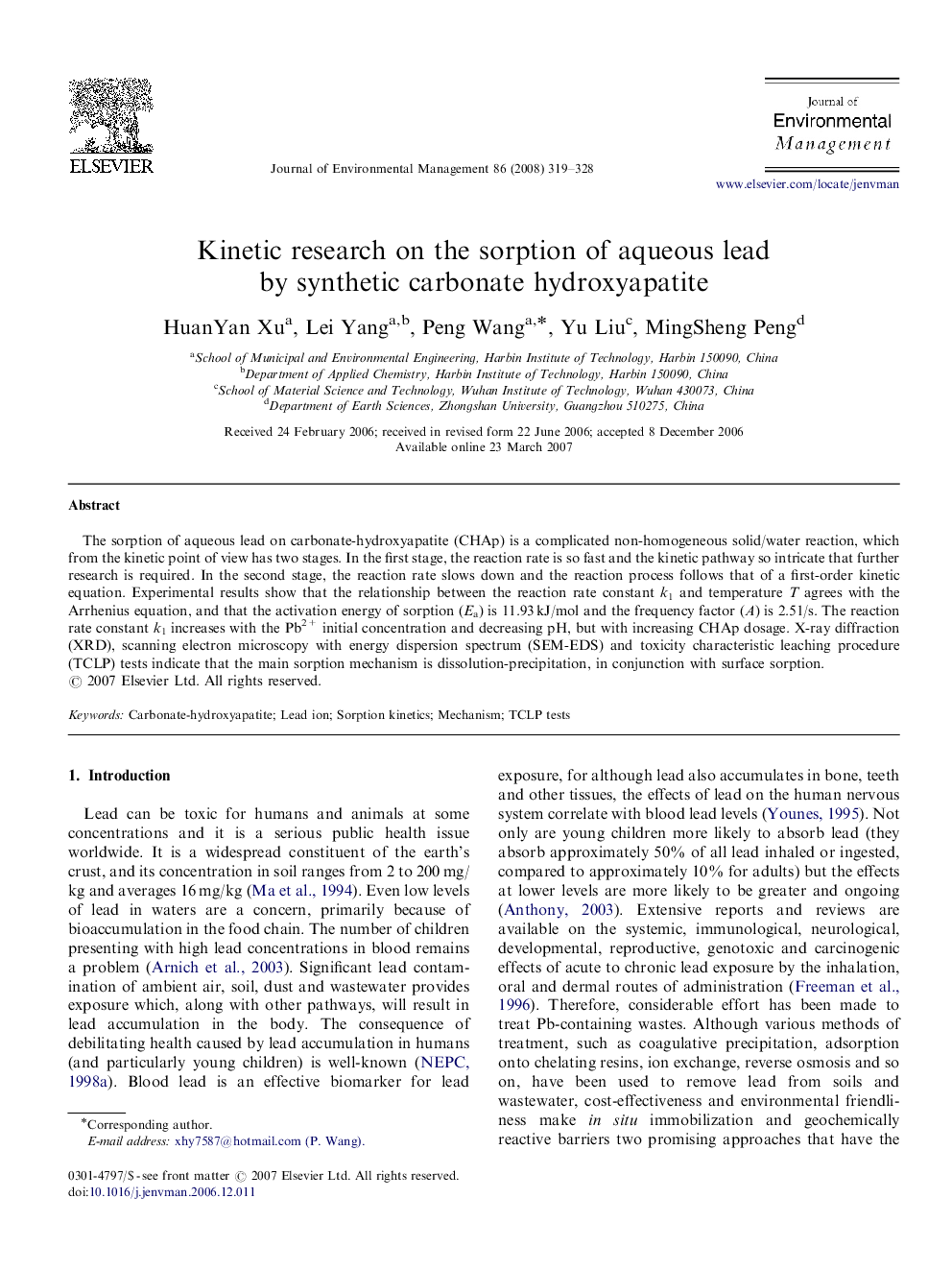| Article ID | Journal | Published Year | Pages | File Type |
|---|---|---|---|---|
| 1058386 | Journal of Environmental Management | 2008 | 10 Pages |
The sorption of aqueous lead on carbonate-hydroxyapatite (CHAp) is a complicated non-homogeneous solid/water reaction, which from the kinetic point of view has two stages. In the first stage, the reaction rate is so fast and the kinetic pathway so intricate that further research is required. In the second stage, the reaction rate slows down and the reaction process follows that of a first-order kinetic equation. Experimental results show that the relationship between the reaction rate constant k1 and temperature T agrees with the Arrhenius equation, and that the activation energy of sorption (Ea) is 11.93 kJ/mol and the frequency factor (A) is 2.51/s. The reaction rate constant k1 increases with the Pb2+ initial concentration and decreasing pH, but with increasing CHAp dosage. X-ray diffraction (XRD), scanning electron microscopy with energy dispersion spectrum (SEM-EDS) and toxicity characteristic leaching procedure (TCLP) tests indicate that the main sorption mechanism is dissolution-precipitation, in conjunction with surface sorption.
